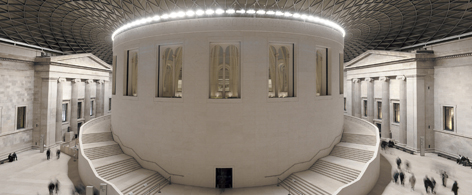The British Museum and Birkbeck’s partnership programmes in a changing policy climate
Dr Fiona Candlin, Senior Lecturer in Museum Studies, Assistant Dean, School of Arts, Birkbeck
f.candlin@bbk.ac.uk
Rosanna Kwok, Head of Adult Programmes, Dept of Learning & Audiences, British Museum
rkwok@britishmuseum.org
Keywords: Partnership, Opportunities, Barriers, Policy, Lifelong learning
In 2000 Birkbeck and the British Museum formed a partnership and began to develop a certificate in world arts and artefacts. This co-funded programme is physically located at the British Museum and is designed to complement their temporary and permanent exhibitions, but is programmed and delivered by Birkbeck.
The opportunities and benefits of the partnership can be considered locally insofar as developed pathways from informal to formal education, introduced new audiences to the Museum and to Birkbeck, and enabled a large-scale programme consisting of some thirty modules to be run economically and to high academic standards. Equally, initial difficulties concerning enrolment, organisation and in-house competition can be understood at an institutional level. Although we touch on all these issues and others, this paper takes a broader perspective to consider the political and policy climate of the times and how they have created opportunities and barriers for museum / university partnerships.
We establish that the Birkbeck / British Museum partnership and the ensuing world arts and artefacts certificate was a direct (if not entirely explicit) response to the policy objectives of the day. In 2000 New Labour policy was extolling the virtues of lifelong learning suggesting that it provided an opportunity to develop personal confidence, enhance our quality of life and improve our chances of getting a job. Museums were thought to be ideally placed to encourage adults intimidated by formal education, and to support creative and cultural learning that would in turn boost the national economy. At the same time museums were under pressure to expand their audience base and to encourage visitors from diverse backgrounds. Thus, in this context, the World Arts and Artefacts certificate was a near-perfect arrangement. Since then, shifts in policy and funding have presented acute difficulties for the partnership and this paper proceeds to review their impact. We discuss the move away from lifelong learning, the withdrawal of funding for equivalent level qualifications (ELQ) and the closure of further education courses on a nationwide scale. Nevertheless, we conclude reasonably optimistically by discussing how the partnership has helped safeguard the future of the world arts and artefacts certificate.
